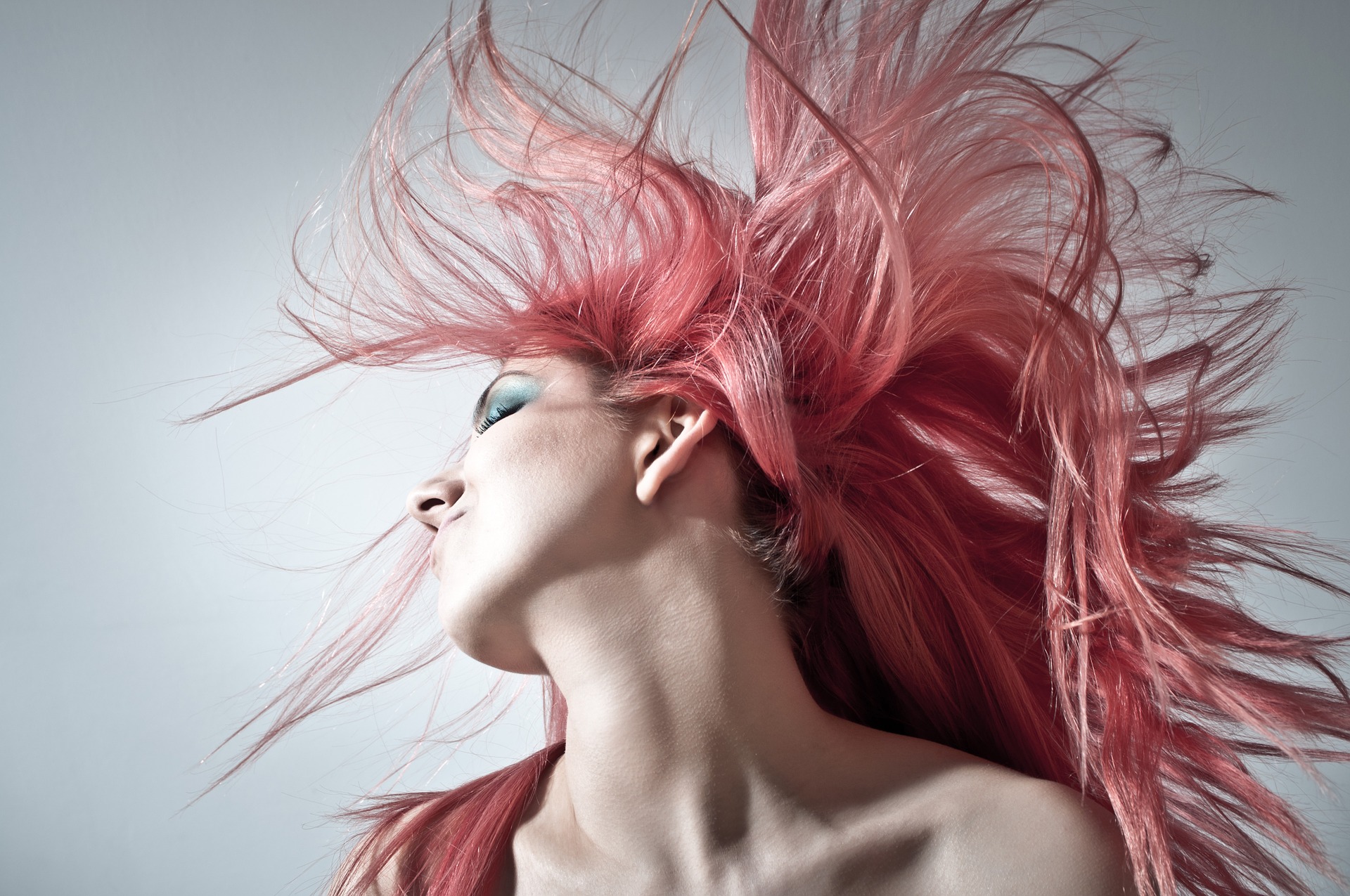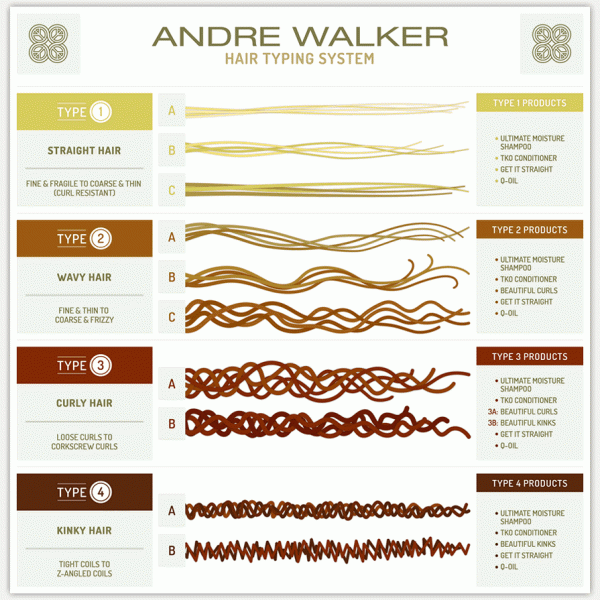Discover Your Hair Type and How To Care For It!
Share

The ’80s were all about hair. From over-the-top ‘dos to sleek perms, hair was just as wild as the times. The truth is, sometimes hair seems impossible to manage! If you’ve found your hair reentering its rebellious phase again rather than being the gorgeous locks you want them to be, you’re in the right place. We’ll walk you through how to get to know your hair and tame it to suit your current style!
Let’s start with – What is hair?
Hair is a protein made of keratin. This is the same protein your fingernails are made of. Each hair strand/follicle consists of three parts. The outermost layer is called the cuticle. It works like protective scales, allowing various compounds in and out of the hair shaft, like water or hair dye. The cuticle is transparent, showcasing our natural, or dyed, hair color. The second layer is the cortex which holds moisture and contains melanin and natural pigmentation (our natural hair color). The medulla is the core of the hair shaft, acting as the marrow of the follicle.

The Hair Cycle
There are four phases in the hair cycle: Anagen | Catagen | Telogen | Exogen.
The Anagen phase is when the hair follicle is actively growing. This phase continues for a few years.
Once the hair stops growing, it is in the Catagen phase, where the follicle detaches and begins to enter the next stage.
The Telogen phase is known as the “rest” phase because the follicle stays or rests in the epidermis.
Eventually, once the follicle falls out, it enters the Exogen phase and the cycle starts again.

Every hair follicle has its own life cycle, so they do not enter the stages simultaneously. This prevents us from having a balding period. Instead, we shed about 50-100 strands per day.
Hair Types
Hairstylist Andre Walker, also Oprah Winfrey’s personal stylist, created the Hair Typing System, which placed hair into four categories ranging from straight to kinky/coily. The hair types can be further broken down into subcategories. However, this classification only focuses on the hair shape and lacks characterizing the hair’s unique properties per individual.
Hair expert and Institute Fellow and Director of Research at TRI Princeton, Dr. Trefor Evans, says that this “…is just one of many ways by which hair from different individuals might differ – others might be ethnicity, color, thickness, age, length, damage level, etc.” Despite this, the Walker system is a very commonly used system in the industry.

Type 1 – Straight Hair
Type 1 hair is classified as straight hair. This type of hair is typically harder to damage while also being more difficult to manipulate (hair curling, teasing, etc.) due to its sebum, which easily travels down the hair shaft due to its straight hair follicle.
Type 2 – Wavy Hair
Type 2 hair is classified as wavy hair and is generally considered as “lax and loose.” The hair follicle in this hair type forms a shape similar to the letter “S.” It is flatter at the root and becomes curlier as it moves down the hair follicle.
Type 3 – Curly Hair
Type 3 hair is classified as curly hair. This type of hair is springy, with light curls. The hair follicle in this hair type forms an “S” shape. The climate heavily influences this hair type: humidity causes more frizziness.
Type 4 – Kinky/Coily Hair
Type 4 hair is classified as kinky/coily hair. This type of hair usually has tightly packed coils. The hair follicle in Type 4 hair forms a shape of the letter “Z.” This hair type has the least cuticle layers compared to the other three hair types. This means that the strands are fine and thin.
Walker ultimately made the hair type system to market his hair products, claiming specific products could only be used on a particular hair type. In his article on hair types, however, Dr. Evans explains how “…all hair is essentially the same stuff that grows in different sizes, shapes, and colors – and unquestionably these different sizes, shapes, and colors can impact many of hair’s properties.”
This is not to say that you’d want to use products marketed for moisture retention if you do tend to have oiler hair, though, as these products often contain oils which can further add to greasiness. Speaking of which, this brings us to our next topic…
Managing Your Hair Type
Since each hair type is chemically different, what works for one hair type might not be the best option for another.
Type 1: This hair type is the most prone to oiliness since no kinks/curls can obstruct its path. Due to the nature of Type 1 hair, people with this hair type should avoid hair products with oil-based formulas and silicone serums. Excess products could contribute to the hair looking greasier.
Type 2: Type 2 hair is not as oily as Type 1 but is still prone to oiliness and dryness. Therefore, lighter products should be used on this hair so not to increase the hair’s greasiness while also moisturizing the follicle. Lightweight oils are recommended.
Type 3: Type 3 hair is naturally dry since the hair follicle structure prevents the scalp’s oils from traveling down the hair shaft. It is advised not to shampoo too often since shampooing removes the already limited oils from the hair. Emollients and humectants are recommended to lock moisture in.
Type 4: This hair type is the most prone to dryness as the hair cannot retain water and quickly loses moisture. Like Type 3 hair, it is suggested to not over shampoo. It is also recommended that people with Type 4 hair use emollients and humectants to help with water retention. This includes shea butter, coconut oil, and any other kind of fatty acids, lipids, or esters.
Our hair is genetically coded to be unique to each individual. This prevents any single solution for maintaining our hair. What might work for one hair type might not work well for another type nor for someone else with the same hair type. It is best to test out a range of products to see what works best for your hair, so that eventually you can create a unique, personalized regime for your uniquely perfect hair.
See our article “101 Series: pH and Healthy Hair” for more tips about keeping your hair healthy.
References:
- De la Mettrie, Roland et al. “Shape variability and classification of human hair: a worldwide approach.” Human biology vol. 79,3 (2007): 265-81. [Link]
- Evans, Trefor. “The Perplexing Topic of Hair ‘Type’: How Do We Classify Hair?” Cosmetics & Toiletries: The Definitive Peer-Reviewed Cosmetic Science Resource, 18 Nov. 2016, [Link].
- Martí, M et al. “The influence of hair lipids in ethnic hair properties.” International journal of cosmetic science vol. 38,1 (2016): 77-84. [Link]
- Sayahi, E et al. “Physical and mechanical properties of Tunisian women hair.” International journal of cosmetic science vol. 38,5 (2016): 470-5. [Link]
- Vestita M., Tedeschi P., Bonamonte D. (2022) Anatomy and Physiology of the Skin. In: Maruccia M., Giudice G. (eds) Textbook of Plastic and Reconstructive Surgery. Springer, Cham. [Link]
If you enjoyed our content, please share, comment, like and follow us on your favorite platforms!
.
.

